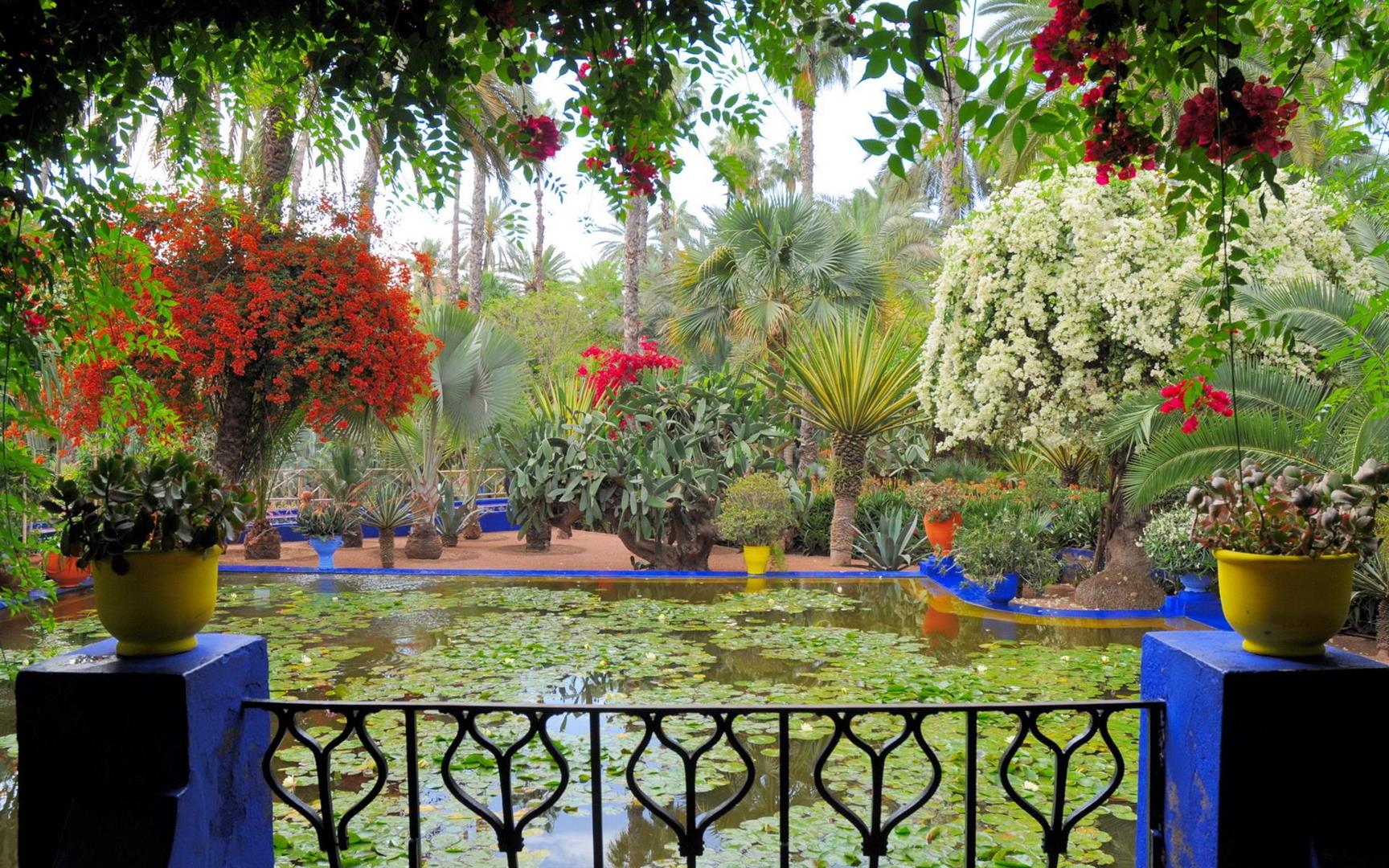
5 Gardens That Will Blow You Away!
By Penny on Jun 20, 2014
If you’re as excited about the #GardenContestNiH as us, you’re probably looking up ways to get ahead of the competition. For inspirational ideas, we’ve compiled a short list of beautiful gardens from around the world.
Jardin Majorelle, Marrakech, Morocco (featured above - via quoteko.com)
As one of Morocco’s most visited sites, this gorgeous botanical garden sits atop twelve-acres in Marrakech. Purchased in 1980 by Pierre Berge and Yves Saint-Laurent (whose ashes were scattered throughout after his death in 2008), it was originally designed by French expatriate, Jacques Majorelle in the 1920’s. Putting in approximately 40 years of passion and work, this garden is a plush collection of Moroccan trees and exotic plants, streams and pools with water lilies and lotus flowers. Over the years, the garden has become the home of numerous species of birds and small creatures; the ultimate retreat from a dynamic urban centre. If vibrant hues of ‘bleu majorelle’ that accent the intricately decorated walls along the garden aren’t reason enough to distinguish the Jardin Majorelle from the rest, note that the garden is also the site for the Islamic Art Museum of Marrakech, which (as all fashion lovers know), includes YSL’s personal collection of North African Textiles as well as ceramics, jewelry and paintings by Majorelle himself.
Gardens at the Versailles Palace, France
 Via holidayandtraveleurope.blogspot.com
Via holidayandtraveleurope.blogspot.com
The gardens at the Versailles Palace are notorious for their classical French Garden style beauty. Spanning over 800 hectares of land on the west side of the palace, these perfectly manicured lawns, flowers, sculptures and fountains took French landscape architect, Andre Le Notre 40 years to perfect (apparently 40 years is standard for these kinds of gardens, so don’t be too hard on yourself). Once the exclusive retreat for Queen Marie Antoinette and King Louis XIV who oversaw the project closely, demanding that plans be submitted to him personally with the “details of everything,” these gardens are now world renown for their impressive elegance, attracting over 3 million visitors a year according to National Geographic.
Kenroku-en Garden, Ishikawa, Japan
 Via commons.wikimedia.org
Via commons.wikimedia.org
One of the Three Great Gardens of Japan, which are the best, nationally acclaimed, large-scale, traditional Japanese gardens considered “Special Places of Scenic Beauty.” Located on 11.4 hectares of land in central Kanazawa, next to the Kanazawa Castle, the garden is as rich in cultural history as it is in botanical diversity. It is said that the forest was guarded by the Maeda Family from about 1620-1840, but the original forest was almost entirely destroyed in a massive fire in the 1750s. Elements of the forest that survived are still preserved today; over 250 years later, visitors can see the Sacred Well of Kenrokuen (believed to be the oldest object in the garden) and the Shigure-tei teahouse, which was built in 1725. Other outstanding features include: the “Kasumigaike” pond which, in size is more like a man-made open sea, an island which is supposedly the home of a powerful, ageless hermit, a stone lantern symbolizing the Japanese Koto, a fountain and of course, aromatic flowers and trees like plum, cherry and azaleas. Blossoming new colours each season, the garden upholds all the principles in its title, meaning “having six factors”; spaciousness, tranquility, artifice, antiquity, water courses and breathtaking views. Arguably the best garden of the three, it is regarded as “one of the most beautiful feudal lords’ gardens in Japan”.
Desert Botanical Gardens, Phoenix, Arizona
 Via ddtvl.com
Via ddtvl.com
Totally different than the gardens above, we love this North American desert garden because it is an extremely diverse conservation site that showcases more than 21,000 kinds of desert dwelling plants. Spanning 57 hectares in Arizona, Desert Botanical Gardens has been in existence since 1939 when the Arizona Cactus and Native Flora Society took over the site. Specialists have modified environmental conditions to accommodate plants that require less extreme weather conditions by protecting them under shadehouses and separating species into regionally specific collections like: Australian, Baja Californian and South American. These collections are additionally maintained by conditions defined by ecosystem; mesquite bosque, semidesert grassland and upland chaparral. The Arizona Cactus and Native Flora Society was founded by a Swedish Botanist, Gustaf Starck who was able to transform the delicate desert environment into this beautiful garden by first posting a “Save the desert” sign.
Sakura Cherry trees and blossoms at High Park, Toronto
 Via Toronto Public Library
Via Toronto Public Library
Since you’ll be too busy pruning, trimming and hedging to go see these beautiful international gardens in-person, we thought we’d include a local destination that all GTA-ers can enjoy. Although peak blossom season is over for this year, there is still plenty to enjoy at High Park, which spans 161 hectares with a mixed recreational and natural park, sporting, cultural, educational facilities, gardens, playgrounds and zoo. The cherry trees are in full bloom between late April and early May and make for a perfectly scenic walk on lazy days. Most of the thirty Sakura cherry trees which were planted in 2011 are located around Hillside Gardens at Toronto Islands. For updates from the Sakura Bud and Bloom Tracker click here.


